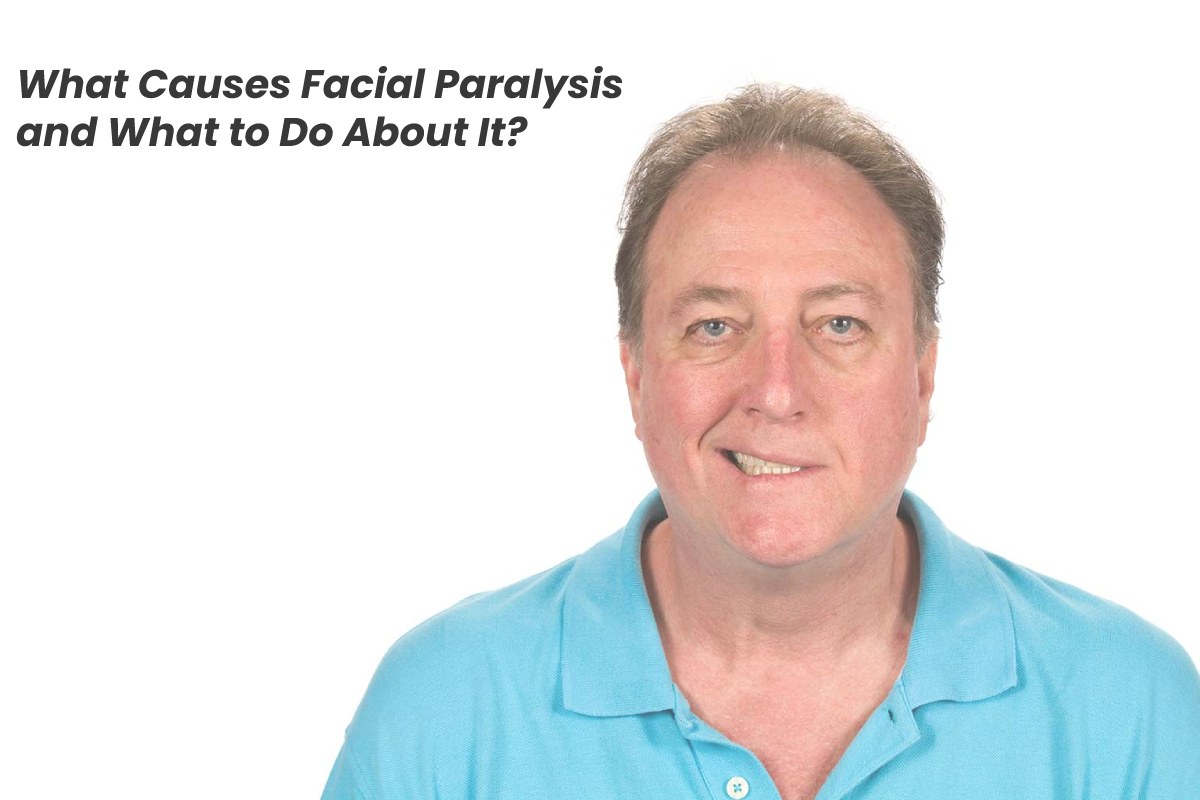Facial Paralysis – A stroke, trauma, tumor, or medical condition can damage a person’s facial nerve, leading to Facial Paralysis. This article will help you understand the causes and find out some effective treatment options offered by experts like Facial Paralysis Institute.
Table of Contents
What Causes Facial Paralysis?
Facial paralysis is when one side of the face becomes weak, numb, or totally unresponsive. It occurs because of damage to specific cranial nerves that control movements on one side of the face. These include the seventh (facial) cranial nerve, which controls muscles in the front part of your ear, cheekbone area, and lower eyelid, upper lip and corner of the mouth, etc. The seventh cranial nerve also has branches that control movement sensation in parts above your jawline, near the scalp area.
If this occurs on one side of your face, you will lose the ability to smile or make any expression on that half of your face. Facial paralysis symptoms vary considerably depending on where the nerve was affected and how badly it got damaged.
Also, there are different types of symptoms which tend to get milder with time, whereas some might never go away completely.
Here are some common symptoms present in people who have suffered cranial nerve injury:
Sudden Drooping of Eyelids (Ptosis)
This is the most common symptom of facial paralysis. If you cannot open one eye normally, this indicates that something might be wrong with your seventh cranial nerve.
Sudden drooping of the corner of the mouth (Mouth Corner Droop): People who have suffered from Bell’s palsy or inflammation of the 7th cranial nerve usually experience this condition followed by complete loss of muscle control on the same side.
If smiling feels like a Herculean effort for you and if a smile makes a portion of your face feels numb, it might be due to nerve damage in the lower half of your face. This weakness can develop into permanent conditions, which means that your face will remain partially or fully paralyzed for a lifetime, depending upon the extent of the damage.
Inability to Raise Eyebrows
People with facial nerve injuries also experience eyebrow-raising weakness and tend to show a unibrow due to a lack of muscle control on the forehead area.
Partial or Total Blindness
If you cannot see properly from one eye or if your pupil gets bigger than it should be or smaller than normal, then you might have some problem involving the seventh cranial nerve, i.e., either your third (oculomotor) cranial nerve is damaged, or both the seventh and third cranial nerves are damaged.
Drooping Upper Lip
A person having facial paralysis often experiences drooping upper lip, which can be observed when they speak in phrases.
General Weakness Dulled Sensation or Lack of Response in the Face
If you cannot feel things being touched on one side of your face or if it seems lifeless to you, this might be a serious indicator of nerve damage.
Lack of Muscle Coordination
If you have poor muscle control over the facial movements, it’s another sign of a paralytic attack. For example, half your smile remains stuck when you try to smile because some muscles fail to work simultaneously with others. This is referred to as facial diplegia, which usually happens due to stroke damage rather than Bells Palsy.
Facial Nerve Paralysis Treatment Options
The good news about Facial Paralysis is that there are several treatment options available for you. Of course, not every option will work well with you, but some general guidelines always remain helpful for people to control their symptoms and lead a normal life.
Consult the specialists at the Facial Paralysis Institute to know about your best option. They may include:
Restoring muscle coordination
A team of medical experts consisting of a Physical Therapist, a Speech Therapist, and an Ophthalmologist can successfully treat nerve damage by performing facial exercises on the affected side.
As time goes on, more muscles become stronger and regain their control so that you can look normal again, i.e., get back to your regular activities, including eating, speaking, etc.
Medications
In case of temporary facial paralysis, doctors can prescribe medications to reduce the pain and hasten recovery. In case you have a chronic form of the condition, anti-seizure medicines are prescribed for further courses of treatment.
Alternative therapies
Acupuncture has been found helpful in rousing the muscles associated with facial expressions. It is also believed that acupuncture improves muscle coordination without causing any damage to nerves or tissue associated with face and head regions.
Botulinum injections help block nerve signals that cause facial tension resulting from contractions in specific facial muscles, which might prolong the suffering.
Conclusion
So, if you have been experiencing facial paralysis symptoms, don’t wait too long to consult a medical expert. They can give you appropriate guidance based on your medical history, age, and other related factors.

